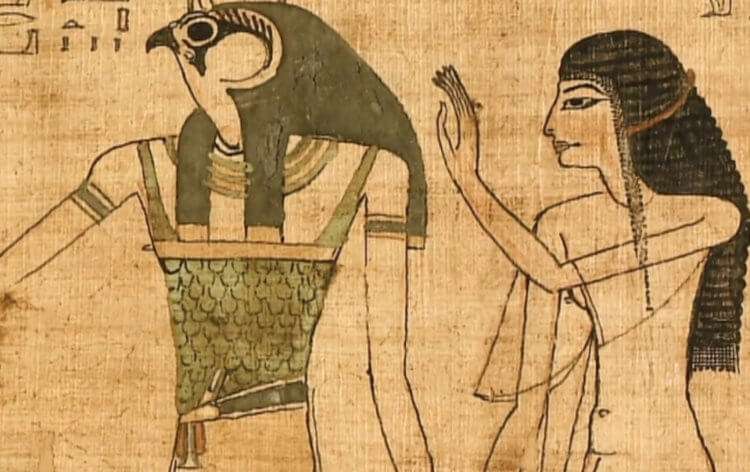The inhabitants of ancient Egypt believed in a huge number of gods – according to scientists, there were about 5,000 of them. It goes without saying that people took all kinds of rituals seriously, especially those related to the funerals of dead pharaohs and other important persons. In almost every tomb archaeologists find excerpts from the Book of the Dead. This is the name of a collection of religious texts to help people overcome the dangers of the netherworld and find prosperity there. Sometimes the excerpts are very long and contain up to two hundred chapters, but in most cases they are one-page magic formulas.
And recently fragments of the same passage from the Book of the Dead have been found in different parts of the world. Scientists were able to connect the two parts and decipher the text contained in them. So what was written in this passage and how did two parts of the same text end up in different places?
An unexpected scientific discovery

The unexpected find was reported in the scientific journal Live Science. While studying the online database of a museum in the New Zealand city of Christchurch, American scientists discovered a fragment from the Book of the Dead. It was written on the material used to wrap the bodies of mummies. They immediately remembered that the same fragment is in the collection of the American Research Institute Getty. Both pieces of material are covered with hieroglyphs and drawings, and if you put them together, you can put together a single story. They noted that other fragments of this passage from the Book of the Dead must exist in the world, but where they are located is unknown.
According to Egyptologist Alison Griffith (Alison Griffith), to write on the material used to wrap the mummy was very difficult, so that buried people obviously tried very hard. Scientists know that the buried man’s name was Petosiris, and his mother was a certain Tetosiris – nothing more can be said about them. The man died in about 300 B.C.
In 2020, 2,500-year-old mummies were found in Egypt. Could they be cursed?
What does the Book of the Dead say?
If you put the two fragments of the Book of the Dead found together, you can get a single story. The canvas depicts a person’s preparation for the afterlife: the sacrifice of a bull, the bringing of household items to the tomb, and the work of porters. Also on the material we can see the goddess of femininity and motherhood Isis and the goddess of birth and death Neptida. Of course, it was not without Anubis – the deity of funerary rituals and mummification.
Isis, the ancient Egyptian goddess of womanhood and motherhood
According to researcher Foy Scalf, in fact the fragment of the Book of the Dead consisted of more parts. Where they are, no one knows. Most likely, they are scattered in different parts of the Earth and are in personal archives. And they got there, most likely, immediately after the discovery of the tomb of the above mentioned Petosiris – the researchers could simply tear the material into pieces and take the rags with them “as a keepsake”. It is known that the piece found in the archives of New Zealand used to belong to Charles Murray, who was British Consul General to Egypt from 1846 to 1863. Then it was sold several times at auctions and preserved in various museum collections.
Read also: How were the Egyptian pyramids built?
The most famous Books of the Dead
But the Books of the Dead themselves are by no means the rarest artifacts. They appeared in ancient Egypt at a time when the cult of the gods began to become more sophisticated in society. They were used during funerary rituals: fragments from them were drawn on the walls of tombs, and later on the materials for wrapping mummies. The longest Book of the Dead that is known to scientists is the so-called Greenfield papyrus, which is 37 meters long. And one of the most famous and important for science is considered to be the papyrus of Hunefer, on which the god of funerary rituals Anubis leads the soul of the dead to judgment.
Links to interesting articles, funny memes, and lots of other interesting information can be found on our Telegram channel. Subscribe!
Scientists tell us new interesting facts about Ancient Egypt almost every month. In early 2021, I wrote about the fact that in 1881, archaeologists found the mummy of Pharaoh Sekenor Ta’a II, who played a very important role in the history of Egypt. This man was thought to have died at about the age of 40 from severe blows to the head. But recently, scientists were able to examine his body with modern equipment and learn more about his death.




